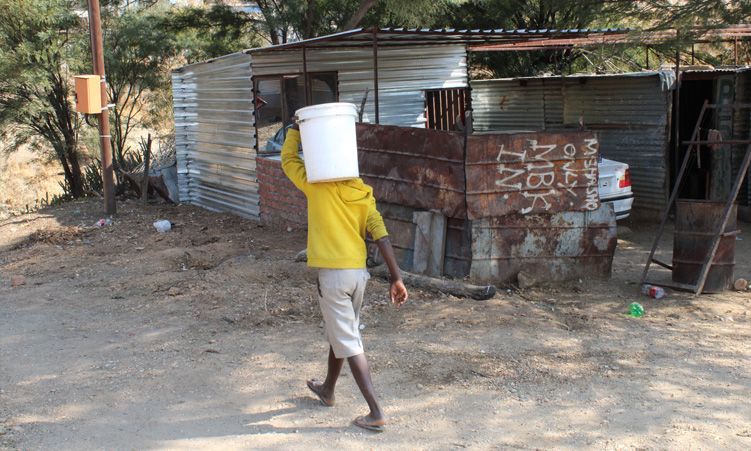The message is loud and clear: Namibia and other African exporters have to decarbonise their carbon-intensive industries or face financial penalties.
The European Union’s recently introduced Carbon Border Adjustment Mechanism (CBAM) aims to help Europe meet its carbon neutrality goals by 2050.
CBAM will impose a carbon tariff on all goods imported to the European market.
It targets carbon-intensive sectors (those producing high carbon dioxide emissions) such as iron and steel, electricity, cement, aluminium, fertilisers and, following a recent amendment, hydrogen, which are prone to carbon leakage.
Carbon leakage – the flight of industry to regions and nations with fewer carbon regulations to avoid the cost of decarbonising – has long undermined international climate change mitigation efforts.
IMPACT ON EXPORTS
CBAM will affect Namibia’s exports, but also incentivise decarbonisation efforts.
The EU is one of Namibia’s most important trading partners.
In 2022, EU imports from Namibia included roughly US$438 720 for iron and steel products, US$270 950 for fertilisers and over U$18 million for a grouping consisting of cement and other stone products, according to the United Nations’ Comtrade database on international trade.
Further research is needed to establish exactly which sectors of Namibia’s economy CBAM will be affected most severely.
Under CBAM regulations, EU importers will have to buy CBAM certificates detailing the carbon footprint of their imported goods.
This will require Namibian exporters to record and report their products’ embedded carbon emissions – all emissions produced during the creation and delivery of a product – placing the onus on the exporter rather than the importer.
Namibian exporters which don’t practise carbon accounting can expect to have to invest more in compliance as they adjust their processes to monitor, report and verify their products’ carbon content.
To assist with this, the EU has established sector-specific reporting mechanisms that Namibian producers will have to become proficient in.
They will increasingly have to invest in developing low-carbon production methods to reduce their exposure to carbon costs.
This gradual move should encourage the decarbonisation of Namibia’s industries.
The carbon tariff may also be calculated on whether the producer has already paid a carbon price in their own country.
IMPLICATIONS AND POLICY
As Namibia has not implemented a national carbon-pricing mechanism, such as a carbon tax or an emissions trading system, our private sector should look at lobbying for the introduction of carbon pricing.
This is because EU importers will, in an effort to reduce expenditure, seek to shift associated import costs to producers or find producers in states with a carbon-pricing scheme.
It is important to note that a carbon-pricing scheme has its own complex national implications which will have to be critically considered should the private sector lean into the option.
There needs to be a policy response.
The EU is a geopolitical bloc, Namibia is a single nation. The response cannot solely be at national level. Potentially, it can also take place at SADC level.
This can include establishing a centralised body responsible for compliance oversight and capacitating exporters with carbon accounting skills and infrastructure.
The African Climate Foundation and the London School of Economics and Political Science estimate that CBAM could cause the continent’s overall economic output to shrink by 0.91%.
Namibia should conduct its own economic impact assessment of CBAM’s projected costs should the private sector not evolve to meet the decarbonisation wave.
CLIMATE JUSTICE
As conversations proliferate around CBAMs in the Global South, the spectre of climate justice looms large.
The UN Framework Convention on Climate Change has established that climate change’s impact on Namibia and other African nations is disproportionate, and most sub-Saharan nations don’t have the financial capacity to respond to decarbonisation calls.
The EU should enhance its commitment to climate finance for adaptation and mitigation through grants, guarantees and equity investments – not through climate loans – to avoid the structural traps that haunt African economies.
Namibia also needs to secure the accreditation of more local institutions to access the Green Climate Fund.
So far, only the Environmental Investment Fund is an accredited microlender.
Namibia has ambitious nationally determined contribution objectives for 2030 which it cannot meet without overhauling micro and macro access to finance.
The CBAM pilot period started 10 months ago and is planned to be in a gradual transition phase until December 2025, with full operationality by 2026.
CBAM’s newly introduced regulations have turned the ‘polluter pays’ principle into European policy.
Namibian stakeholders need to use this period to plan their strategies and prepare exporters for carbon accounting.
- • Suzie Shefeni is a research associate with the Institute for Public Policy Research (IPPR). She specialises in policy issues related to renewable energy and emerging technologies.
Stay informed with The Namibian – your source for credible journalism. Get in-depth reporting and opinions for
only N$85 a month. Invest in journalism, invest in democracy –
Subscribe Now!






